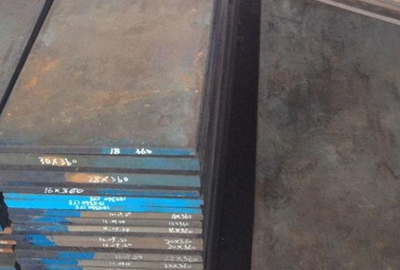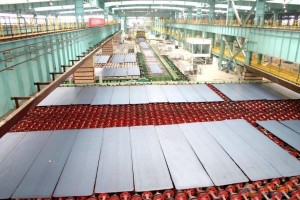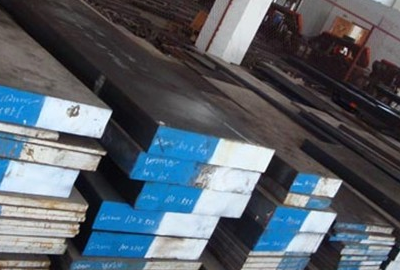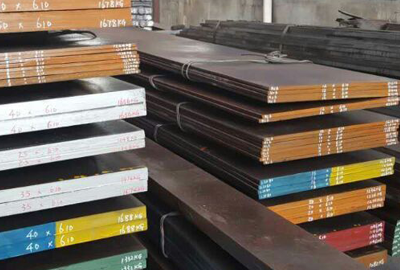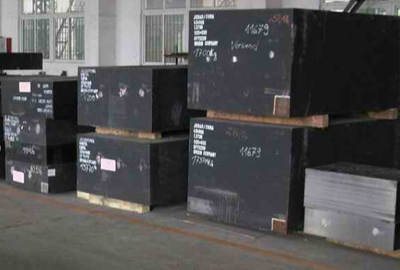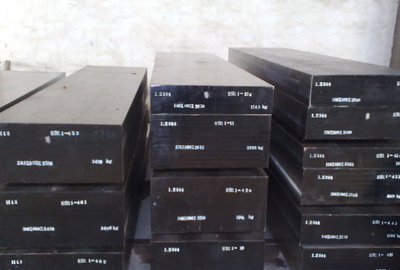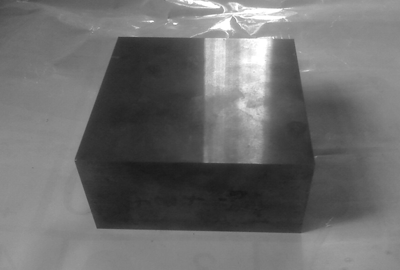Mat.No. 1.2365, DIN X32CrMoV33, AISI H10
Short Description:
Designation by Standards Mat. No. DIN EN AISI 1.2365 X32CrMoV33 30CrMoV1211 H10 Chemical Composition (in weight %) C Si Mn Cr Mo Ni V W Others 0.32 0.25 0.30 2.95 2.75 - 0.55 - - Description Hot work, chromium-molybdenum type tool steel that exhibits excellent resistance to softening at elevated tempertaure. This grade is very reistant to thermal fatique cracking (heat cracking), and can be water cooled in service. Applications It is recommended for difficult hot work tooling ...
Product Detail
FAQ
Product Tags
Designation by Standards
| Mat. No. | DIN | EN | AISI |
| 1.2365 | X32CrMoV33 | 30CrMoV1211 | H10 |
Chemical Composition (in weight %)
| C | Si | Mn | Cr | Mo | Ni | V | W | Others |
| 0.32 | 0.25 | 0.30 | 2.95 | 2.75 | - | 0.55 | - | - |
Description
Hot work, chromium-molybdenum type tool steel that exhibits excellent resistance to softening at elevated tempertaure. This grade is very reistant to thermal fatique cracking (heat cracking), and can be water cooled in service.
Applications
It is recommended for difficult hot work tooling applications such as hot punches, forging dies, hot shear blades, extrusion tooling.
Physical properties (avarage values) at ambient temperature
Modulus of elasticity [103 x N/mm2]: 207, 176 (at 500oC), 165 (at 600oC)
Density [g/cm3]: 7.88, 7.69 (at 500oC), 7.65 (at 600oC)
Thermal conductivity [W/m.K]: 30.0, 30.1 (at 500oC), 29.7 (at 600oC)
Electric resistivity [Ohm mm2/m]: 0.37, 0.78 (at 500oC), 0.89 (at 600oC)
Specific heat capacity[J/g.K]: 0.46, 0.55 (at 500oC), 0.59 (at 600oC)
Coefficient of Linear Thermal Expansion 10-6 oC-1
| 20-100oC | 20-200oC | 20-300oC | 20-400oC | 20-500oC | 20-600oC | 20-700oC |
| 12.6 | 13.3 | 13.8 | 14.2 | 14.6 | 15.1 | 15.4 |
Continuous Cooling Transformation (CCT) Diagram

Click the image to enlarge the diagram.
Soft Annealing
Heat to 780-810oC, cool slowly in furnace. This will produce a maximum Brinell hardness of 229.
Stress Relieving
Stress relieving to remove machining stresses should be carried out by heating to 600-650oC, holding for one hour at heat, followed by air cooling. This operation is performed to reduce distortion during heat treatment. Hardness after quenching is 44-54 HRC.
Hardening
Harden from a temperature of 1010-1050oC followed by air, oil quenching or warm bath quenching 450-450oC.
Tempering
Tempering temperature: 538-621oC, double tempering is required.
Tempering Temperature (oC) vs. Hardness (HRC) vs. Tensile Strength (N/mm2)
| 100oC | 200oC | 300oC | 400oC | 500oC | 550oC | 600oC | 650oC | 700oC |
| 51 | 50 | 49 | 49 | 49 | 50 | 48 | 41 | 29 |
| 1730 | 1680 | 1620 | 1620 | 1620 | 1680 | 1570 | 1300 | 940 |
Tempering Diagram

Click the image to enlarge the diagram.
Diagram Tempering Temperature – Mechanical Properties

Click the image to enlarge the diagram.
Diagram Tempering Temperature – Mechanical Properties

Click the image to enlarge the diagram.
Forging
Hot forming temperature: 1100-900oC.
Machinability
90-95% of a 1% carbon steel.
Corrosion Resistance
Corrosion resistance of this alloy is better than that of plain carbon steels. However it will rust unless given protective treatment.
Forms manufactured: Please see the Dimensional Sales Program.
Disclaimer
The information and data presented herein are typical or average values and are not a guarantee of maximum or minimum values. Applications specifically suggested for material described herein are made solely for the purpose of illustration to enable the reader to make his own evaluation and are not intended as warranties, either express or implied, of fitness for these or other puposes. There is no representation that the recipient of this literature will receive updated editions as the become available.
FAQ Content
![[0{7)7UAZ(]4W{5TSMC65Q7](https://www.htsteelmill.com/uploads/077UAZ4W5TSMC65Q7.png)
